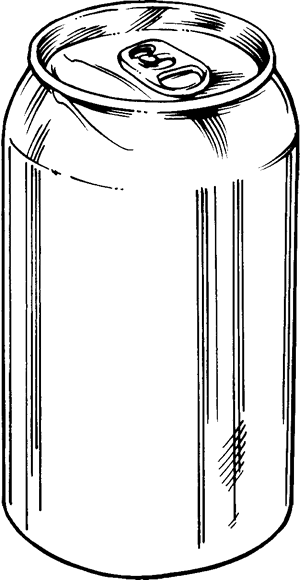Lifestyle Lift: Complete Guide to This Cosmetic Procedure
What’s a lifestyle lift?
A lifestyle lift is a minimally invasive cosmetic surgery procedure design to address signs of age in the lower face and neck area. This technique combine elements of traditional facelift surgery with less invasive approaches, target sag skin, jowls, and loose neck tissue while require shorter recovery times than full facelift procedures.
The procedure focus principally on the jawline and neck region, make it an attractive option for individuals seek facial rejuvenation without the extensive downtime associate with comprehensive facelift surgery. Unlike traditional facelifts that address the entire face, lifestyle lifts concentrate on specific problem areas that normally show early signs of aging.
How the procedure work
During a lifestyle lift, surgeons make small incisions around the ear area and sometimes under the chin. Through these cautiously place incisions, they remove excess skin and tighten underlying tissues. The procedure typically involves reposition facial muscles and remove or redistribute fat deposits that contribute to an aged appearance.
The surgical technique vary depend on individual needs and the surgeon’s preferred approach. Some practitioners use specialized instruments and techniques that allow for smaller incisions and reduce tissue trauma. The goal is achieved natural look results while minimize visible scarring and recovery time.
Most lifestyle lift procedures take between one and three hours to complete, depend on the extent of work need and whether additional treatments areperformedm simultaneously. The surgery is oftentimperformedorm under local anesthesia with sedation, though some cases may require general anesthesia.
Benefits and advantages
One of the primary advantages of lifestyle lifts is the reduced recovery time compare to traditional facelift surgery. Many patients return to normal activities within a week, though complete healing take several weeks. The smaller incisions typically result in less visible scar and reduce post-operative discomfort.
The procedure can efficaciously address several common age concerns. Patients frequently see improvement in jowl definition, neck tightness, and overall jawline contour. The results can create a more youthful appearance while maintain natural facial expressions and characteristics.
Cost considerations besides make lifestyle lifts appeal to many patients. The procedure broadly cost less than comprehensive facelift surgery, make facial rejuvenation more accessible to individuals with budget constraints. The reduce time aside from work and daily activities besides minimize indirect costs associate with extended recovery periods.
Ideal candidates
The best candidates for lifestyle lifts are typically individuals in their forties to sixties who show early to moderate signs of facial aging. People with good skin elasticity and overall health tend to achieve the virtually satisfactory results. The procedure work considerably for those with specific concerns about the lower face and neck area sooner than extensive aging throughout the entire face.
Realistic expectations are crucial for candidate selection. Individuals seek dramatic transformation or those with severe skin laxity may be advantageously served by more comprehensive surgical options. The lifestyle liftprovidese subtle to moderate improvement instead than dramatic facial restructuring.
Medical history and current health status play important roles in determine candidacy. Patients should be non-smokers or willing to quit smoking advantageously ahead and after surgery, as smoke importantly impairs healing and increase complication risks. Certain medical conditions or medications may too affect surgical candidacy.
Risks and considerations
Like all surgical procedures, lifestyle lifts carry inherent risks that patients must understand before proceed. Common risks include bleed, infection, scar, and adverse reactions to anesthesia. Temporary numbness, swelling, and bruising are expected side effects that typically resolve during the healing process.
More serious complications, though rare, can include nerve damage affect facial movement or sensation, asymmetry, or unsatisfactory cosmetic results require revision surgery. Choose a qualified, experienced surgeon importantly reduce these risks but can not eliminate them solely.

Source: need nutrition.blogspot.com
Some patients may experience proficient last side effects such as persistent numbness, visible scarring, or changes in hair growth patterns around incision sites. These issues are typically minor but can be concern for some individuals.
Recovery process
The recovery timeline for lifestyle lifts vary among individuals but broadly follow predictable patterns. Instantly after surgery, patients experience swelling, bruising, and mild to moderate discomfort manage with prescribe pain medications. Most people can return to desk work within a few days to a week.
During the first week, patients must follow specific post-operative instructions include keep the head elevate, avoid strenuous activities, and attend follow-up appointments. Sutures are typically removed within seven to ten days, depend on heal progress and surgeon preferences.
Full recovery and final results become apparent over several months as swell subsides and tissues settle into their new positions. Most patients see significant improvement within four to six weeks, with continued refinement over the following months.
Expect results
Lifestyle lift results vary base on individual factors include age, skin quality, and extent of age present before surgery. Most patients achieve noticeable improvement in jawline definition, reduce bowling, and tighter neck contours. The results appear natural when perform by skilled surgeons who understand facial anatomy and aesthetic principles.
The longevity of results depend on various factors include genetics, lifestyle choices, and ongoing age processes. Most patients enjoy their results for five to ten years before consider additional procedures. Maintain healthy lifestyle habits, protect skin from sun damage, and follow good skincare routines can help extend results.
Some patients combine lifestyle lifts with other cosmetic procedures such as eyelid surgery, brow lifts, or non-surgical treatments like dermal fillers or laser therapy to achieve more comprehensive facial rejuvenation.
Choose the right surgeon
Select a qualified surgeon is peradventure the nigh important decision in the lifestyle lift process. Board certification in plastic surgery or facial plastic surgery indicate specialized training and expertise in cosmetic facial procedures. Surgeons should have extensive experience specifically with lifestyle lift techniques and be able to show before and after photos of their work.
During consultations, patients should feel comfortable ask questions about the surgeon’s experience, complication rates, and approach to the procedure. A good surgeon will provide honest assessments of will expect results and will discuss alternative options when appropriate.
Facility accreditation is another important consideration. Surgeries should be performed in accredit surgical facilities with appropriate safety equipment and train staff. Thiensuresre proper standards amaintainedain throughout the surgical experience.

Source: highlightstory.com
Alternatives to consider
Several alternatives to lifestyle lifts exist for individuals seek facial rejuvenation. Non-surgical options include dermal fillers, botulinum toxin injections, laser treatments, and radio frequency devices that can provide modest improvement with minimal downtime.
Traditional facelift surgery remain the gold standard for comprehensive facial rejuvenation, peculiarly for individuals with advanced age changes. While more invasive than lifestyle lifts, traditional facelifts can address more extensive concerns and typically provide farseeing last results.
Thread lifts represent another minimally invasive option that use specialized sutures to lift and tighten facial tissues. These procedures require minimal downtime but broadly provide more subtle results than surgical options.
Cost considerations
Lifestyle lift costs vary importantly base on geographic location, surgeon experience, and specific techniques use. Patients should obtain detailed cost estimates that include all associate fees such as anesthesia, facility charges, and post-operative care.
Most cosmetic surgery procedures are not cover by insurance, so patients must plan for out-of-pocket expenses. Many practices offer financing options to help make procedures more affordable through monthly payment plans.
When compare costs, patients should consider the surgeon’s qualifications and experience kinda than but choose the lowest price. Revision surgeries to correct unsatisfactory results much cost more than invest in quality care initially.
Make an informed decision
Decide whether to undergo a lifestyle lift require careful consideration of personal goals, expectations, and circumstances. Patients should take time to research the procedure soundly, consult with multiple qualified surgeons, and consider all available options before make final decisions.
Understand the limitations of lifestyle lifts is crucial for satisfaction with results. The procedure provide improvement sooner than perfection and can not stop the natural age process. Patients with realistic expectations and specific concerns address by the procedure tend to be virtually satisfied with their outcomes.
Support from family and friends during the decision make process and recovery period can be valuable. Have realistic expectations and understanding both benefits and risks help ensure positive experiences with lifestyle lift procedures.



